Thanks For The Memories: Revisiting Wimbledon Park For One Last Round
Mark Townsend returns to Wimbledon Park for a final round, some 16 years after his previous visit
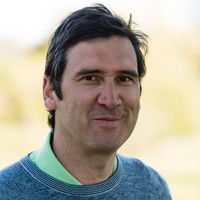
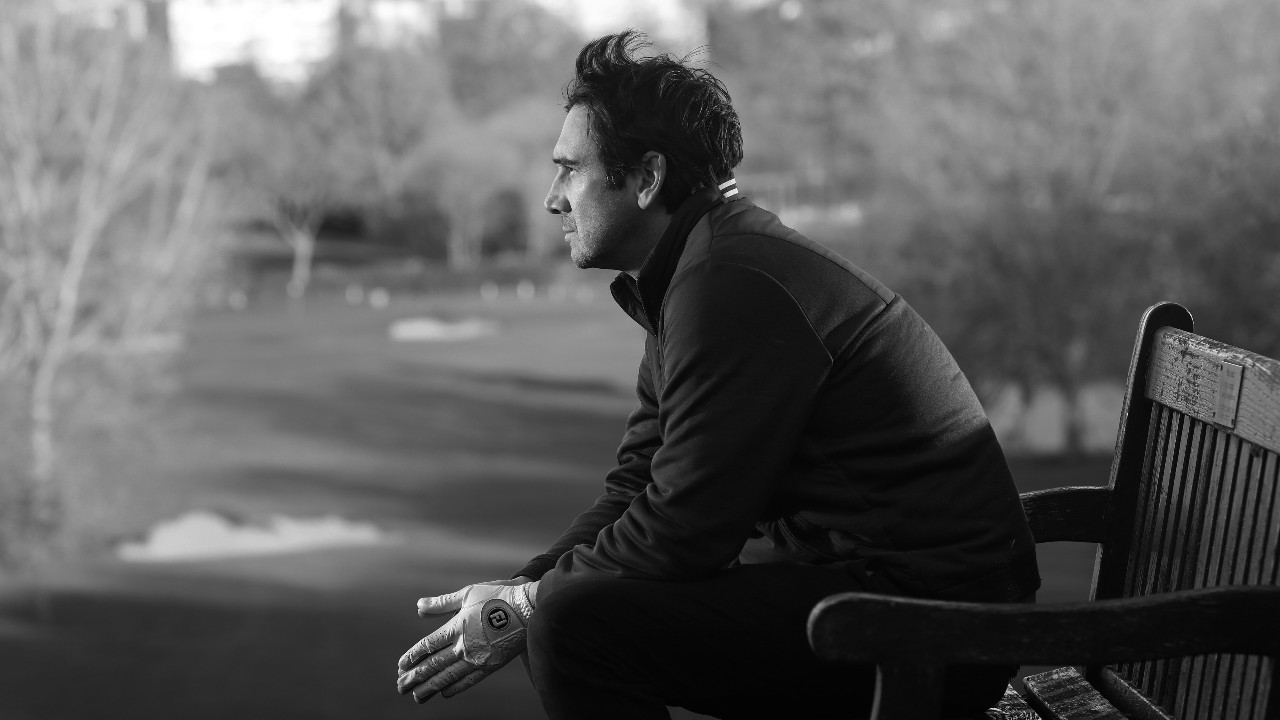
“Ron Townsend was one of the most popular men to ever set foot in Wimbledon Park Golf Club. We all loved him. Ron was a very caring man with a watchful eye for anyone on the sidelines, making sure they were not left out of things. He not only enjoyed himself, but he made sure everyone else did.”
Having spent the past week working out how to do my dad some sort of justice, his great friend Derek Kean had managed it in just a few lines. This was December 16, 2005, a date I will never forget as it was the day of Dad’s funeral. Exactly three weeks after being diagnosed with pancreatic cancer he had died in a local hospice. It was also the last time that I had stepped foot in the golf club. We had both been members here since 1985. It was where he had spent some of his happiest times and where, on that day, I was surrounded by well-meaning faces who I was only used to seeing out on the course.
Dad’s early years were spent growing up in a small market town, Llanidloes, right in the heart of Wales before becoming the headmaster of a local primary school in Wimbledon for 29 years. He would mainly play other sports, as well as running various teams and activities across the borough, alongside his life as a husband to Mum and ever-present Dad to my sister and me. There wasn’t much time for golf until I took an interest.
Most of our early golfing days were spent at Sandown Park, Richmond Park, Wimbledon Common or on holidays in Llanidloes. Royal Wimbledon was the pick of the local clubs, always thought to be particularly well to do and therefore not even on our radar. Wimbledon Park, despite its unique location with the course sitting right opposite the All England Lawn Tennis and Croquet Club, home to Wimbledon’s eponymous fortnight, and on land designed by Capability Brown, was supposedly a bit of a hidden gem.
At various points on the course you would play alongside some outrageous property, a cricket club, an idyllic lake and an athletics ground where Corinthian Casuals played for a short time, but it was the course that always stood out. Less than 10 miles away sat central London but here, shoehorned into a relatively limited space, were 18 holes, all beautifully maintained in among the mature oaks and grassy knolls, and a whole world away from everything around it. It measured only 5500 yards from the back tees but, with a collection of short par 4s, criss-crossing par 3s and no par 5s, it was both brilliant and quirky.
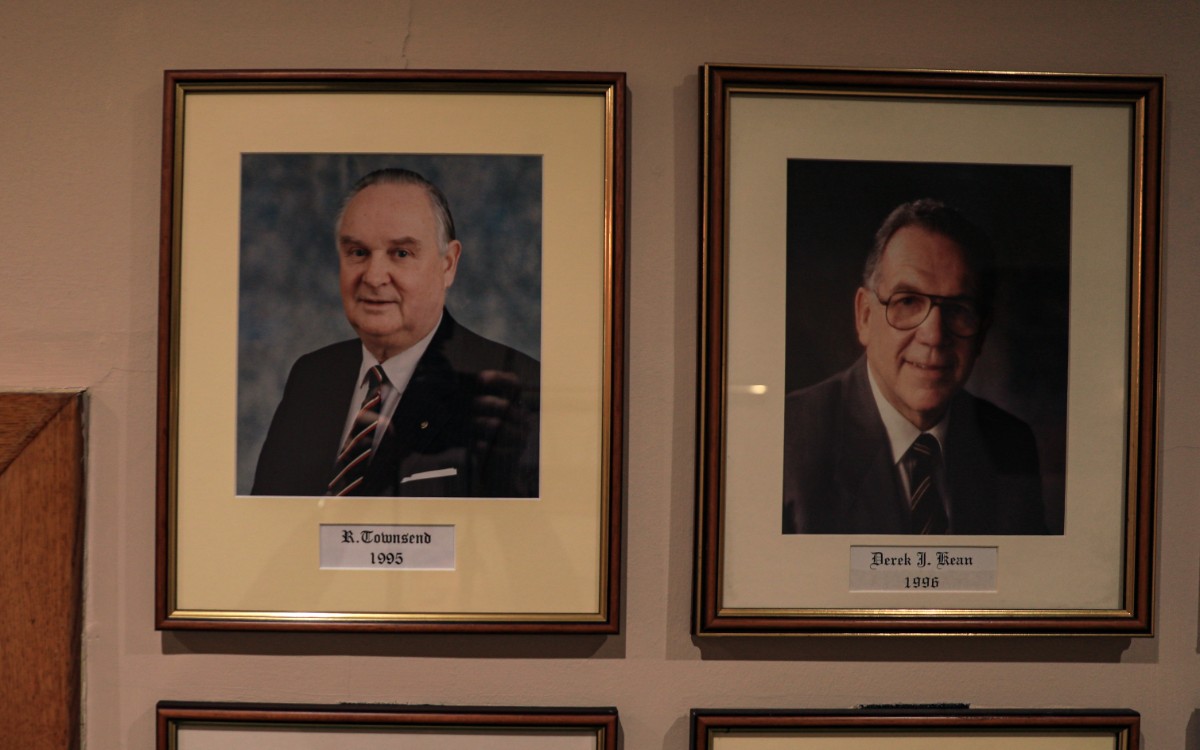
And, as we would soon come to learn, it had members from every walk of life; cab drivers, doctors, surgeons, painters and decorators, builders, lawyers and so on, who made it what it was. People just wanted to play golf and have a laugh.
I was interviewed by a gentleman and ex-captain called Ted Smith who was as normal as his name suggested. It was a Tuesday night in March, 1985. I wore my school uniform, attempted to speak clearly and, two days later, received a letter offering me junior membership for £32. By the end of the year Dad joined me in what was one of the best decisions of our lives.
Subscribe to the Golf Monthly newsletter to stay up to date with all the latest tour news, equipment news, reviews, head-to-heads and buyer’s guides from our team of experienced experts.
In the early days we needed one another. I was shy and he was more of a frustrated golfer than anything else. He had dazzled in other sports but golf was more of a conundrum. There was nothing really much to like about his game; his grip was too strong, his swing was a bit of a heave, powerful but all in the wrong places, and his shot shape was, at best, a fade. Some holes were pretty much unplayable – the opening tee shot, with a large oak 100 yards ahead and to the left of the 1st tee, remained unfathomable as any drive wouldn’t have time to correct itself or drift weakly down the 18th fairway.
He would never take a practice swing, his clubs were a mishmash of odds and ends and his putter was one of the ugliest things imaginable. He rarely played any shot with loft and, if he left any sort of a legacy, it was when the club embarked upon a large bunker programme due to the ease in which he would putt out of them.
But, as time went on, Dad would learn to get it round. He played most of his golf off a handicap of around 14 but his greatest skill was his temperament. Dad’s behaviour and chat were never dependent on how well he might have been playing. While there may have been despair whenever he would, on occasion, knob a fairway wood along the ground, the furthest that he would let himself down was by ruffling his hair.
Within a couple of years Dad took on the running of the junior section with another friend’s parent and a large chunk of our lives, outside of school, were spent at Home Park Road, SW19.
He made friends easily and I would be part of a junior section that remains as hilarious a bunch of individuals as I have met in any walk of life. Accentuated by this being the mid-80s the collections of hairstyles, clothing, physiques and acne was something else. The summer holidays would be spent together and filled with endless laps of the course, cans of Coke and packets of Frazzles. We would talk about 1-irons, Tour Edition balls, the pros and cons of lemon juice to lighten our hair and anything and everything in between. We rarely lost a club fixture, whitewashed Royal Wimbledon 5-0 with the longest match lasting 13 holes and we all knew one another’s phone numbers and What’s In The Bags off by heart. There was no talk of bad backs, chipping yips or adjustable clubs and it was bloody brilliant.

Another popular topic of conversation among the juniors was the club’s assistant pro, Dean Wingrove. He had joined as Fred Lucas’ sidekick in 1983 before taking on the head pro’s position six years later. Dean had the swing, wardrobe and charisma that any golf-obsessed teenager would have died for. While most of us would arrive ready for 18 holes dressed in British Home Stores’ latest range Dean would breeze around the place – he liked to walk quickly after watching Tom Watson at the 1981 Ryder Cup – full of jokes and head to toe in a collection of pastel offerings and slip-on shoes. His polyester trousers, albeit a fire hazard, were as sharp as the man himself.
Dean was able to drive the last three par 4s, he would drink in wine bars, he coached Roger Chapman on the European Tour and, in my eyes at least, he was just a Tour School away from joining him. He had the waggle, lag and late hit that was as easy on the eye as anything on the TV. Even in the days of the sweet-swinging Seve, Paul Way and Howard Clark this was the move that many of us would dream of. Dean was the one who would bring the course to a standstill as everybody would stop what they were doing to watch his shot and, for the best part of a decade, I don’t think I ever saw him miss a shot. He has shot a dozen 60s, never without ever quite managing the magic number. He began one round with eight consecutive 3s before doubling the 9th, which would lead to another 60, and he has eagled every hole bar the 13th and 16th. Of his 10 holes-in-one, eight of them have taken place at Wimbledon Park.
Everybody loved Dean, he was like a badge of honour to bring up in conversation when visiting other clubs and he was the poster boy of the place.
Dean’s route to Wimbledon Park had begun in the unlikely surrounds of Battersea. His dad was a foreman at Gartons glucose factory and his mum a cleaner in a furniture shop. His dad gave golf a go in an effort to stay in shape and his son would join him at the age of 11.
“Golf has given me a life that I never should have had,” Dean explained. “I grew up on a council estate in the really rough end of Battersea in the late 70s so my early memories were of boarded up windows, high-rise blocks and cars on bricks. Going to Richmond Park was like going to the countryside. I had never seen deer before, all I had done was practise in my local park, York Gardens. Then it just started; my bedroom wall was covered in pictures of Tony Jacklin, everything that I owned was to do with Jacklin, the thick rubber boots that you couldn’t even walk in and the irons that I bought from Woolworths. I would later go to an indoor night school where I had lessons with an assistant called Steve Lloyd. and I got down to scratch and turned pro at 17 at Royal Wimbledon.”
After missing out at Tour School and then six years at Wimbledon Park the position of head pro came up.
“A lot of my friends had been promised the pro’s job when their bosses retired and not one of them got it. They said that they had to advertise the position so I was thinking that I might not have a club but, on Saturday December 2, 1989, one of the committee asked if he could have a word outside the shop and offered me the job. I remember ringing my mum and I couldn’t talk, I was so emotional. I just looked in the mirror at my little flat and I said ‘Righto Dean, it’s down to you now’.
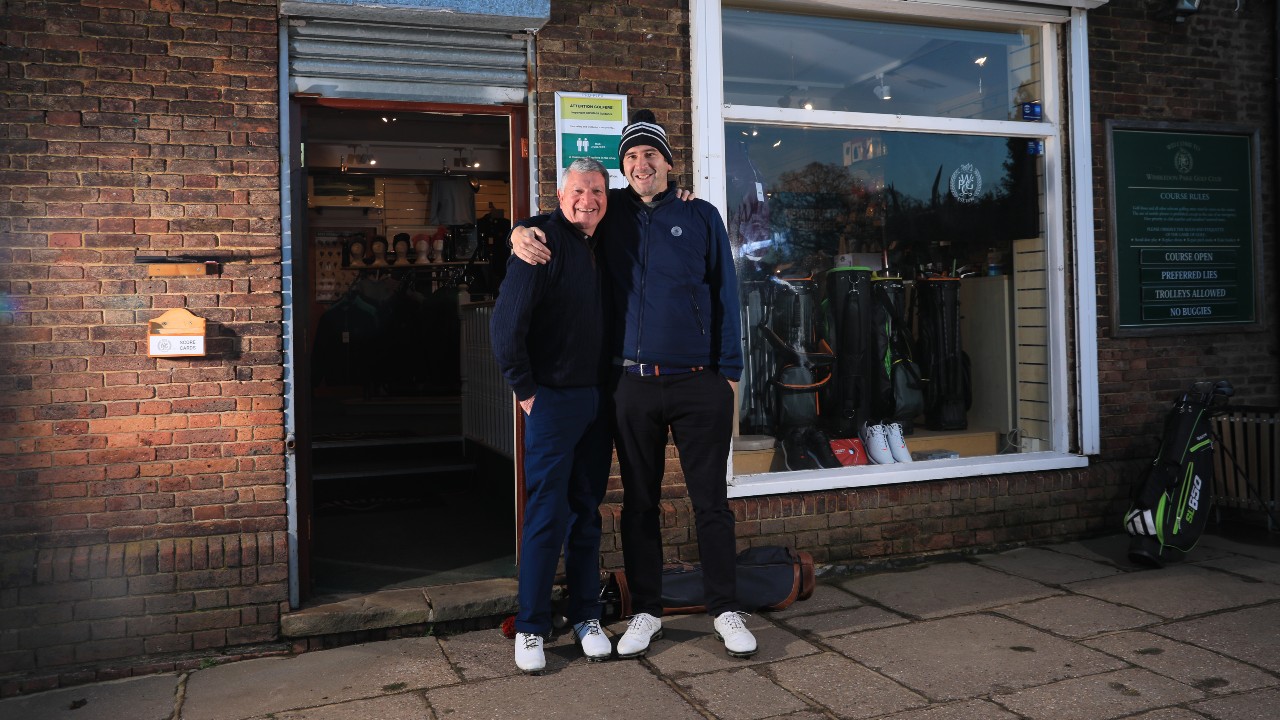
Over the years we’ve kept in touch and the last time that I saw Dean in person was on the 1st tee of the pro-am day of the PGA at Wentworth. He was with Ant & Dec and he looked happy, and I felt similarly proud. I knew a bit of his background – his headmaster’s report read ‘No-one wants to know an illiterate golfer’ – and I definitely knew how great a coach and decent a person he is.
At the end of November I received an email from him saying that there was only one month remaining of Wimbledon Park as an 18-hole course – was there a chance that I could come down for one last round? The far side, where holes 4 to 11 sit, would be no longer part of the puzzle.
In 2018, in a plan to treble its space, the All England club offered the golf club £63.75m for their 73 acres, land which had previously been used for car parking and queuing during the tennis fortnight. Eighty-four per cent of the members agreed to sell and each one, among them Piers Morgan and Ant & Dec, received an £85,000 windfall.
The plan now is to build a new 8,000-seat show court and 38 other grass courts on the course while local residents, environmental and heritage groups are preparing to campaign against any grand additions, claiming that it breaches a covenant which prevents building on the Grade II listed parkland.
I hadn’t been a member for 16 years but I quickly organised a return visit. For some of those years the memory of Wimbledon Park was probably a bit too much to bear. It is where Dad and I had shared so many more good times than might have been possible had we not taken up golf. But enough time had now passed and the pull of the place was too much to miss out on.
Fittingly I stayed at Mum’s the night before and my sister, whose wedding reception had taken place at the club in 1992, dropped me off. My first reacquaintance was with the assistant secretary, Peter Crutch, who I remember joining three decades earlier, before Dean soon appeared.
It was like going back in time. The snooker room had gone, a room where Dad and I had watched Tony Meo, from the adjoining table, make three successive centuries in a match against Dean there. The honours boards and photos were, reassuringly, all in the same place and I headed straight to the far corner of the immense locker room, to number 53, which sits diagonally across from Dad’s at 314.
I could count the number of rounds on one hand that I had played here with a driver and none with any fondness. It was a club that had always baffled me, even the 3-wood had generally got the better of me, preferring instead to rely on a Ben Hogan Apex 5-wood, bought from Dean. My irons were now more forgiving, though nowhere near as good looking as my old Mizuno Tour Pro Originals, another purchase from Dean. I now, bizarrely given my chronic short game, have five wedges in my bag, as opposed to two, and one which has possibly 10˚ more loft than anything that I had previously used here before. And I had a bag full of 14 clubs which never would have been the case, even as a junior who carried a 1 and a 3-iron.
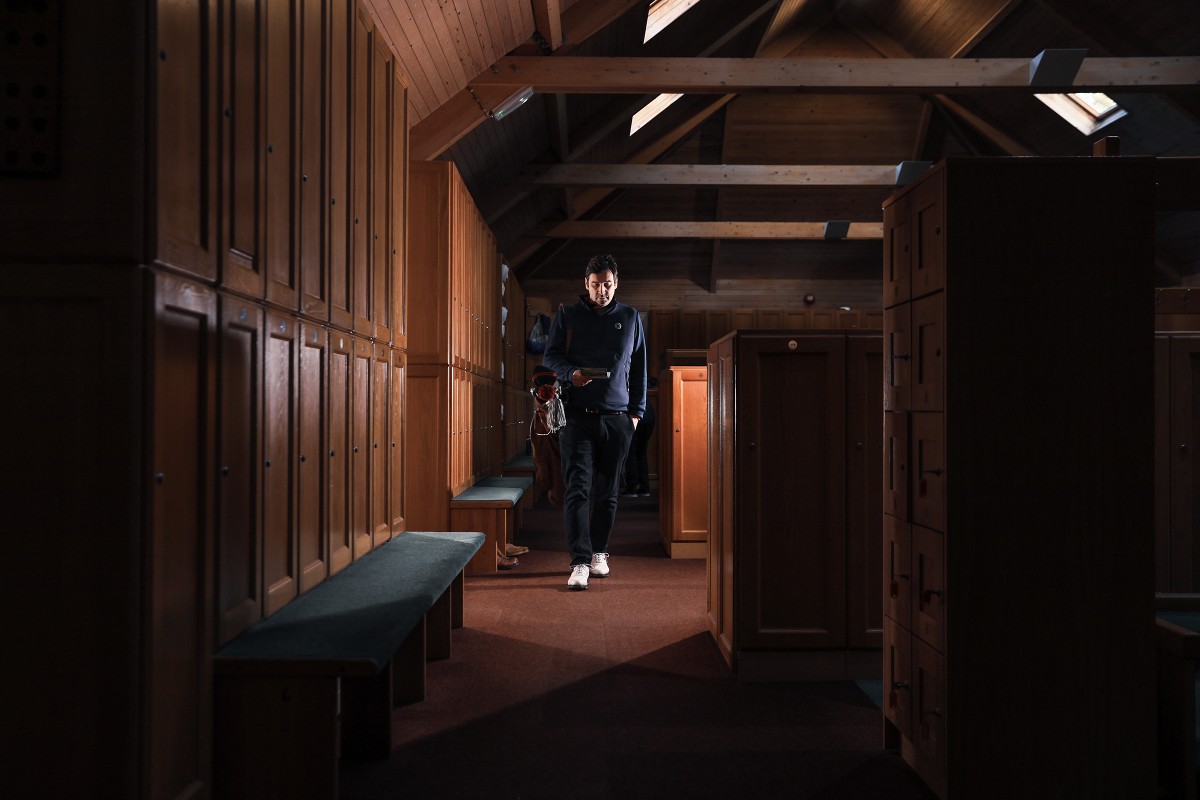
I would be joined by my brother-in-law, there would be the usual four shots given and, in the back of both of our minds, was the knowledge that the match would almost certainly go down to the 18th.
Given it was the week before Christmas it was wet and windy and every bit as good as those salad days of the 80s. The layout was pretty much identical, paying testament to the original design as well as the lack of any space, but it had moved with the times. The greens had been remodelled and extended, the bunkers were now in the right place, more penal and defined, and the tees were bigger and better.
I paid my immediate respects to Dad by hitting his oak at the 1st, my version being a quick hook, and each hole would serve as a reminder of something special in my golfing soul. Old demons were put to bed as I played well away from various haunting patches of ground, where my first double hit and chipping air shot had taken place, and new ones were sown. A mix of a 50-year-old body and modern-day driver meant that I was still hitting the same clubs in to most holes, the first six holes continued to flummox me and, at various junctures of the round, a particularly happy memory of my old man would hit me.
My favourite memory on any golf course was when a number of his veteran mates came across two fairways to congratulate and give him a hug as we played the 9th, the day after he won a leg of the Spring Meeting in the mid-90s.
I would manage one birdie, at the 15th, the hole where he had his single hole-in-one in 2003, and I would lead from the 1st hole to the 18th green before succumbing at the very last putt, an all-too-familiar climax to things, and an almost identical surrender to the one that took place on the 36th and final hole of the 1988 Junior Cup. Something, as it did at the time, that would have amused my Dad greatly.

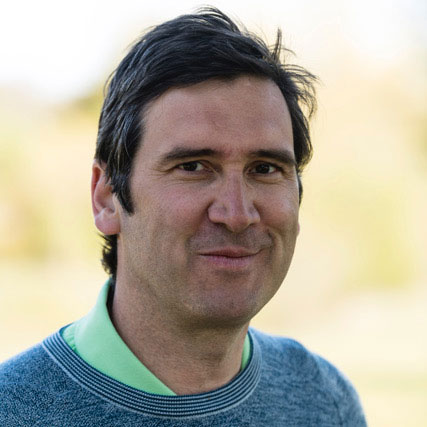
Mark has worked in golf for over 20 years having started off his journalistic life at the Press Association and BBC Sport before moving to Sky Sports where he became their golf editor on skysports.com. He then worked at National Club Golfer and Lady Golfer where he was the deputy editor and he has interviewed many of the leading names in the game, both male and female, ghosted columns for the likes of Robert Rock, Charley Hull and Dame Laura Davies, as well as playing the vast majority of our Top 100 GB&I courses. He loves links golf with a particular love of Royal Dornoch and Kingsbarns. He is now a freelance, also working for the PGA and Robert Rock. Loves tour golf, both men and women and he remains the long-standing owner of an horrific short game. He plays at Moortown with a handicap of 6.